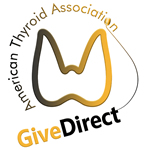ABBREVIATIONS & DEFINITIONS
Thyroid nodule: an abnormal growth of thyroid cells that forms a lump within the thyroid. While most thyroid nodules are non-cancerous (benign), 5-10% are cancerous (malignant).
Hürthle cell nodule: thyroid nodule made of Hurthle cells, which are normal cells found in the thyroid together with the follicular cells. Hurthle cells have a distinctive appearance under the microscope.
Thyroid fine needle aspiration biopsy (FNAB): a simple procedure that is done in the doctor’s office to determine if a thyroid nodule is benign (non-cancerous) or cancerous. The doctor uses a very thin needle to withdraw cells from the thyroid nodule. Patients usually return home or to work after the biopsy without any ill effects.
Indeterminate thyroid biopsy: this happens usually when the diagnosis is a follicular or Hurthle cell lesion. Follicular and Hurthle cells are normal cells found in the thyroid. Current analysis of thyroid biopsy results cannot differentiate between follicular or Hurthle cell cancer from non-cancerous nodules. This occurs in 15-20% of biopsies and often results in the need for surgery to remove the nodule.
Non-diagnostic thyroid biopsy: this happens when not enough cells are obtained during the biopsy to provide a diagnosis. This occurs in 5-10% of biopsies. It often results in the need to repeat the biopsy.
Molecular genetic tests: tests that analyze genes and microRNAs expressed in benign or cancerous cells. Molecular tests can be used in thyroid biopsy specimens to either diagnose cancer or to determine that the nodule is benign.
Genes: a molecular unit of heredity of a living organism. Living beings depend on genes, as they code for all proteins and RNA chains that have functions in a cell. Genes hold the information to build and maintain an organism’s cells and pass genetic traits to offspring.
microRNA: a short RNA molecule that has specific actions within a cell to affect the expression of certain genes.




